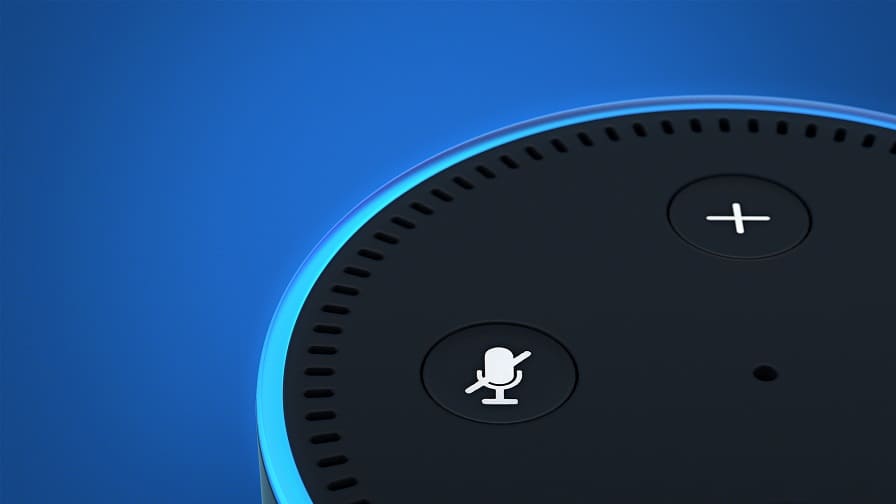In a recent study, marketing tech company Wiraya found that businesses are increasingly focusing on voice search as services such as Alexa and Siri become more eagerly adopted by consumers. In fact, one in four (26%) of Brits are already interacting with day-to-day devices using voice.
We caught up with group’s UK director, Sam Madden, to learn more about how the solution is being adopted, which celebrity people would pick for an automated call system and whether it’s finally time we all embraced voice search.
New research from marketing technology company Wiraya and YouGov has revealed that 71% of consumers think voice will be used for one or more daily tasks in 10 years’ time. When and how did voice become today’s ‘big thing’?

Prior to this latest boom in voice tech, businesses tended to be slow to act, partly due to the voice technology’s unfortunate association with the PPI blight. By now we’ve all received an unsolicited call from an anonymous number about how much money we’re owed. This legacy has negatively affected the perception of voice, and it was always going to take a significant change to have consumers entertain voice as a means of communicating with brands again. However, change is afoot.
Now, true market leaders are starting to get serious about their AI offerings and voice technology is integral to that. We’re seeing it used differently by companies and it has a new, wider lease of life, finally using the unique strengths of the channel to drive a personal and relevant experience for users.
Are businesses harnessing the potential of voice?
SM: The massive potential of voice has yet to be tapped. When it comes to the businesses we interact with on a daily basis – banks, building societies, insurance or utility companies – nearly half of all consumers are looking to be able to speak directly to their provider to get a question answered quickly. Similarly, a third need direct, verbal help understanding recent changes to their contract or a direct channel to make an honest complaint.
While our recent survey unveils 26% of us are actually engaging day-to-day through voice tech today, in 10 years’ time, day-to-day activities like online banking will be conducted entirely by conversing with an AI.
The recent wave of technology giants producing voice-based, smart-home units shows we’re at the beginning of something big. Companies will have to keep pace throughout this period as the technology evolves to ensure they maintain and increase market share.
What sort of challenges are faced when adopting this tech?
SM: While voice in the context of a one-way conversation is grabbing many of the headlines, more must be said about the potential of voice as a means of two-way communication with brands. If we go too far down the path of seeing voice solely as a one-way channel, from consumer to brand, we lose the real potential to have real and valuable interaction with customers.
In terms of key use cases where voice can be used right here right now include when making it easier to use a product or service; for example, to optimise advanced device settings, or to explain a recent change they didn’t understand, 75% responded that this would encourage them to receive more communications from brands via automated voice systems.
And what opportunities could it bring those who adopt?
SM: The rise of voice technology is great news for service providers focused on the customer experience. Today, when asked if they trusted that TV service providers could keep them updated with important information to their packages, less than half of consumers responded positively. This points to an enormous opportunity for those prepared to enhance how they communicate.
The good news is that live deployments are now emerging across Europe, from challenger brands to established market leaders. Agria Insurance in the UK is putting this strategy into action by using an AI-based solution. Through a smart combination of channels including pre-recorded voice messages, the business enables customers to easily renew lapsed policies from the convenience of their mobile phones, significantly reducing churn.
The report also found that personalisation for voice system used is key, with 64% of total respondents preferring a female voice on this type of system when asked to choose. The survey suggested the importance of regional accents matched to consumers’ locations, where, for example, two-thirds of Scottish people would prefer to hear a Scottish accent, while a third of Londoners would prefer a London accent. How do you see voice evolve?
SM: Technologists and brands will need to work together to devise solutions that hyper-personalise the messages being delivered to each audience. Much like in existing marketing methods, having your finger on the pulse of audience segments is critical. Simply by scratching the surface on this issue, we uncovered Helen Mirren as the celebrity voice most people would like to hear from on a businesses’ automated voice call system. What does this mean? There’s clearly an appetite from consumers to welcome the use voice when it’s used with recognisable voices or brand leaders.
As this report’s findings suggest, voice technology transcends conventional age divides for marketers. Younger people show a clear appreciation of adopting voice technology, yet, perhaps surprisingly, almost half (48%) of over 55s believe voice will be used for typing on a laptop or smartphone in 10 years’ time. Marketers will need to delve beyond demographic data to deliver truly personalised experiences through voice in the future.
And do you think voice will ever completely replace traditional search?
SM: The data voice unlocks for brands is incredibly valuable. Not only can customers be connected with what they are looking for quicker and more intuitively, but suddenly marketing teams know how long customers were on the phone for and can gauge their interest from elements like the tone of voice. This is the future of engagement.
However, while it is certainly true voice has the potential to be far more compelling than tradition channel, every channel has its place in the customer journey. Search will endure for the foreseeable future as an important touchpoint consumers are accustomed to using in their daily lives. Voice presents one of the biggest opportunities for marketers in recent years and it’s time for business to take advantage of this and truly engage with their customers.

